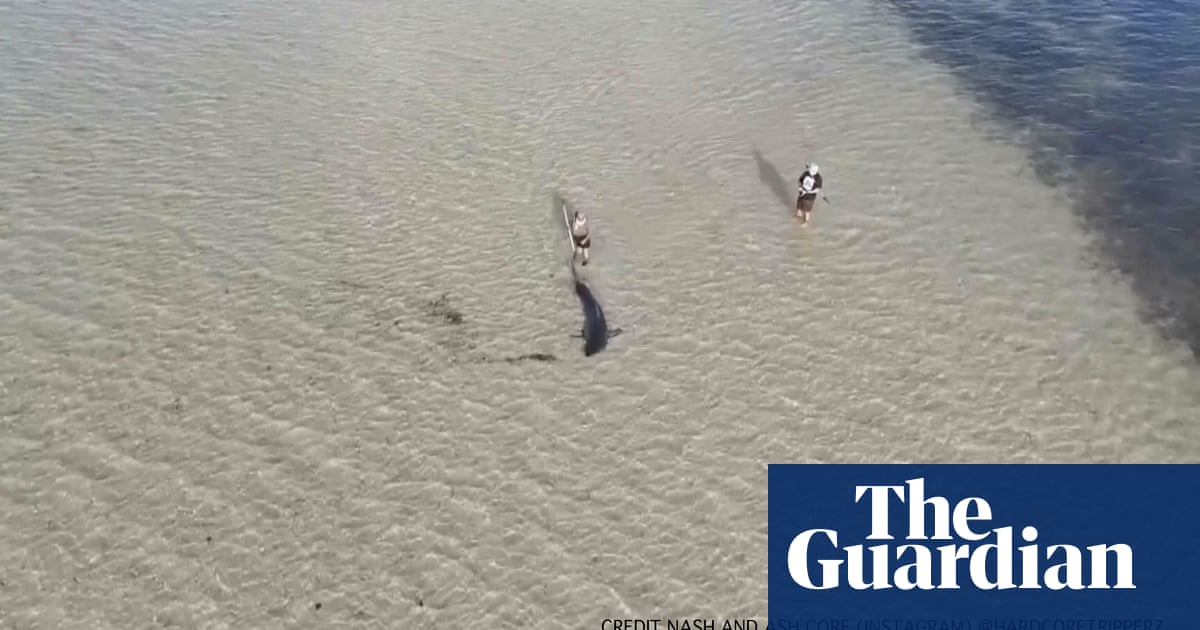Tourist Nash Core admits he felt some fear when he and his 11-year-old son waded into the ocean off the Australian coast to help rescue a three-metre great white shark stranded in shallow water.
Three local men managed to return the distressed animal from a sand bank into deeper water after an almost hour-long rescue effort on Tuesday near the coastal town of Ardrossan inSouth Australia.
“It was either sick or … just tired,” said Core, who was visiting with his family from the Gold Coast in Queensland. “We definitely got it into some deeper water, so hopefully it’s swimming still.”
Sign up for the Afternoon Update: Election 2025 email newsletter
Core came across the unusual human-shark interaction while travelling around Australia with his wife, Ash Core, and their sons, Parker, 11, and Lennox, 7.
Nash Core used his drone to shoot video of the writhing shark before he and Parker decided to help the trio who were struggling to move the shark into deeper water.
“To be honest, I did have some thoughts about, ‘oh, why am I going out here?’” Core said on Thursday.
“As we were going out, my young son, Parker, turned to me and said … ‘My heart’s pounding’. I said, ‘Yeah, mine’s beating pretty fast too’.”
The three men had used crab rakes – a garden rake-like tool for digging small crabs from sand – to move the shark into deeper water by the time the father and son arrived.
Core said he decided against pushing the shark himself.
“They … got it into deeper water where I thought it’s probably not a good idea to go any further. That’s its territory and I’ll stay back,” he said.
Core said the rescuers later told him they had never seen a beached shark before.
Macquarie University wildlife scientist Vanessa Pirotta said while shark strandings were not common, they were becoming more visible through social media.
There could be a number of reasons why marine animals like sharks might strand, including illness and injury. The shark could also have chased prey into the shallows, Pirotta said.
“If you see something like this, human safety comes first and foremost,” Pirotta said. “You can contact environmental authorities … who will get someone appropriate to come and assist.”
